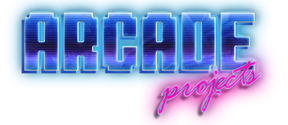winteriscoming
Champion
I think it would probably work fine on 32-bit or 64-bit versions of Python, and a native serial port would probably be fine if you had on on an older pc.I will test that.I've read yours posts, I installed Python 3.5.2 (32 bits, must I download 64 bits ?) and pyserial, under windows 10 (64).Here's a card emulator for Mario Kart Arcade GP 2. I didn't test it with 1. It's very similar to the one for WMMT, but needed a couple changes. I verified that cleaning works and I've successfully started a new card, won some races and reloaded it a couple times. It seems to work ok.
It's nice turning off that annoying announcer! I don't see an option for that in the game menu, so I guess having a card is the only way to be able to turn it off.
Wiring is the same as for WMMT using the 8-pin header on the Triforce named J3.
J3 on Chihiro to Female 9-pin D-sub that connects to USB Serial Adapter (TU-S9):
Pin 3 [or 8] (GND) - Pin 5 (GND)
Pin 4 (TXD) - Pin 2 (RXD)
Pin 5 (RXD) - Pin 3 (TXD)
I will check for an USB/serial or if I have an older PC still working with buillt in serial port.


